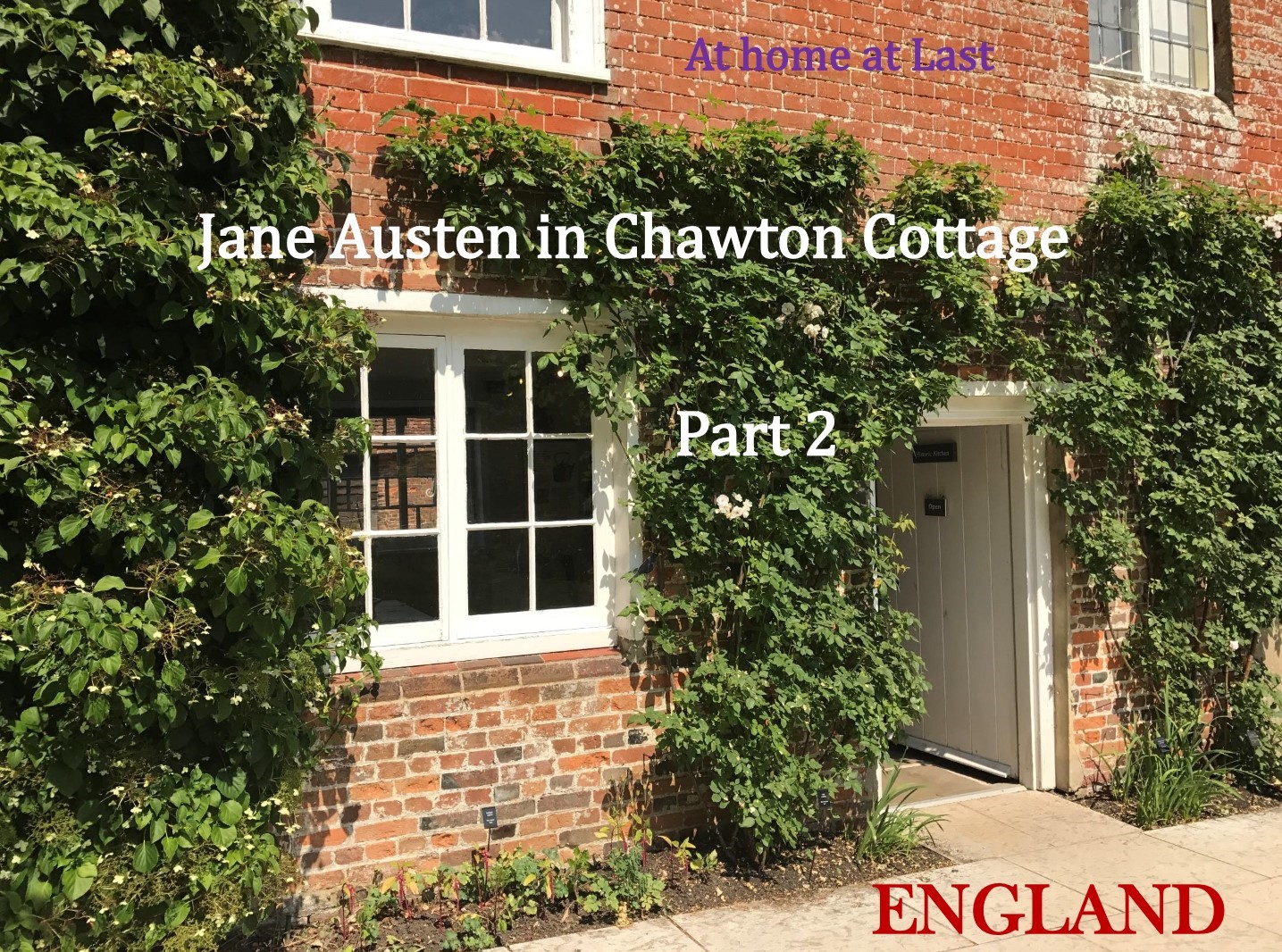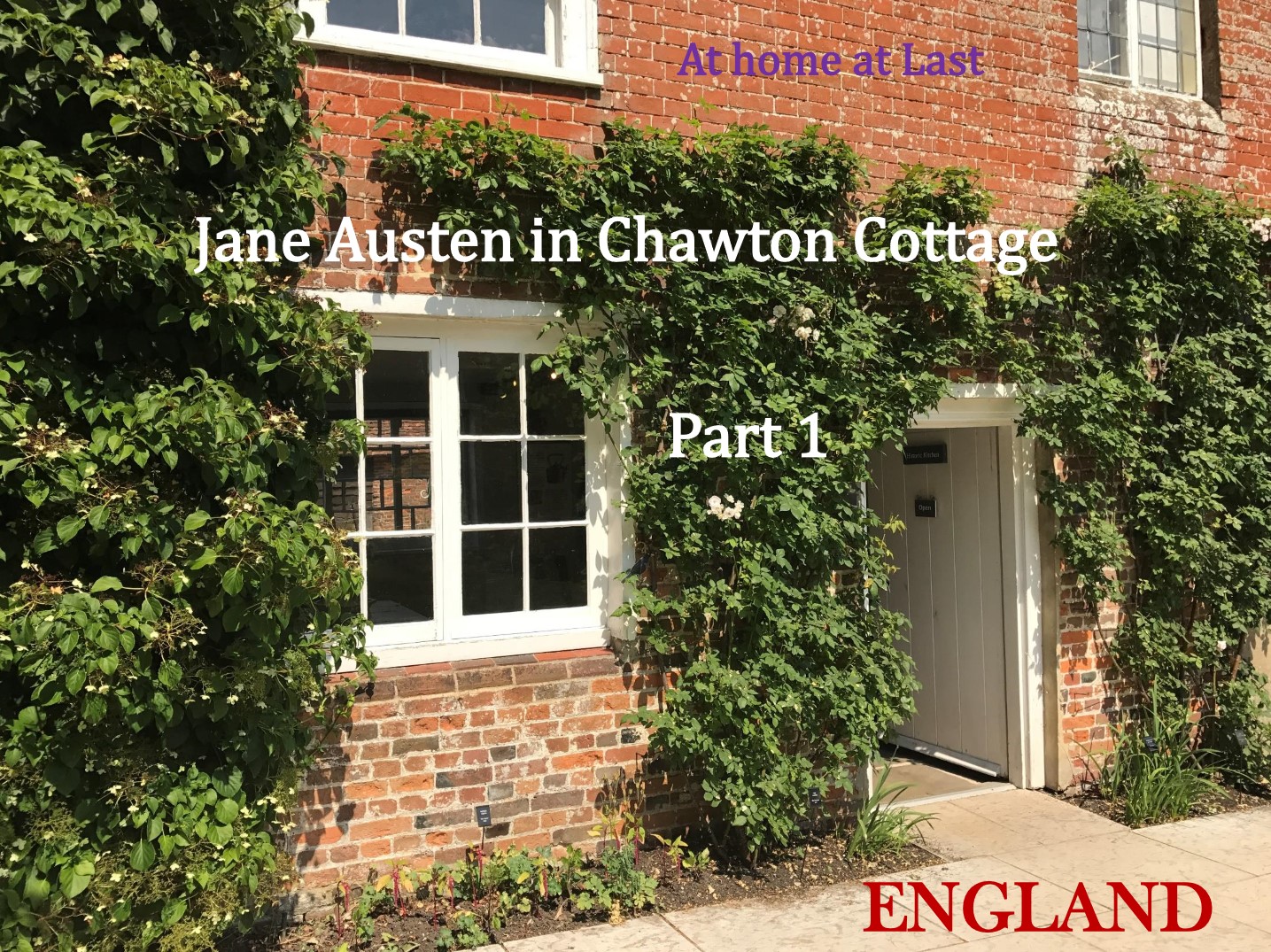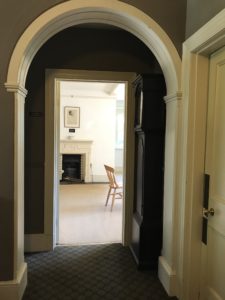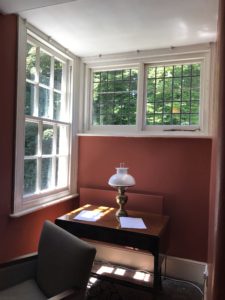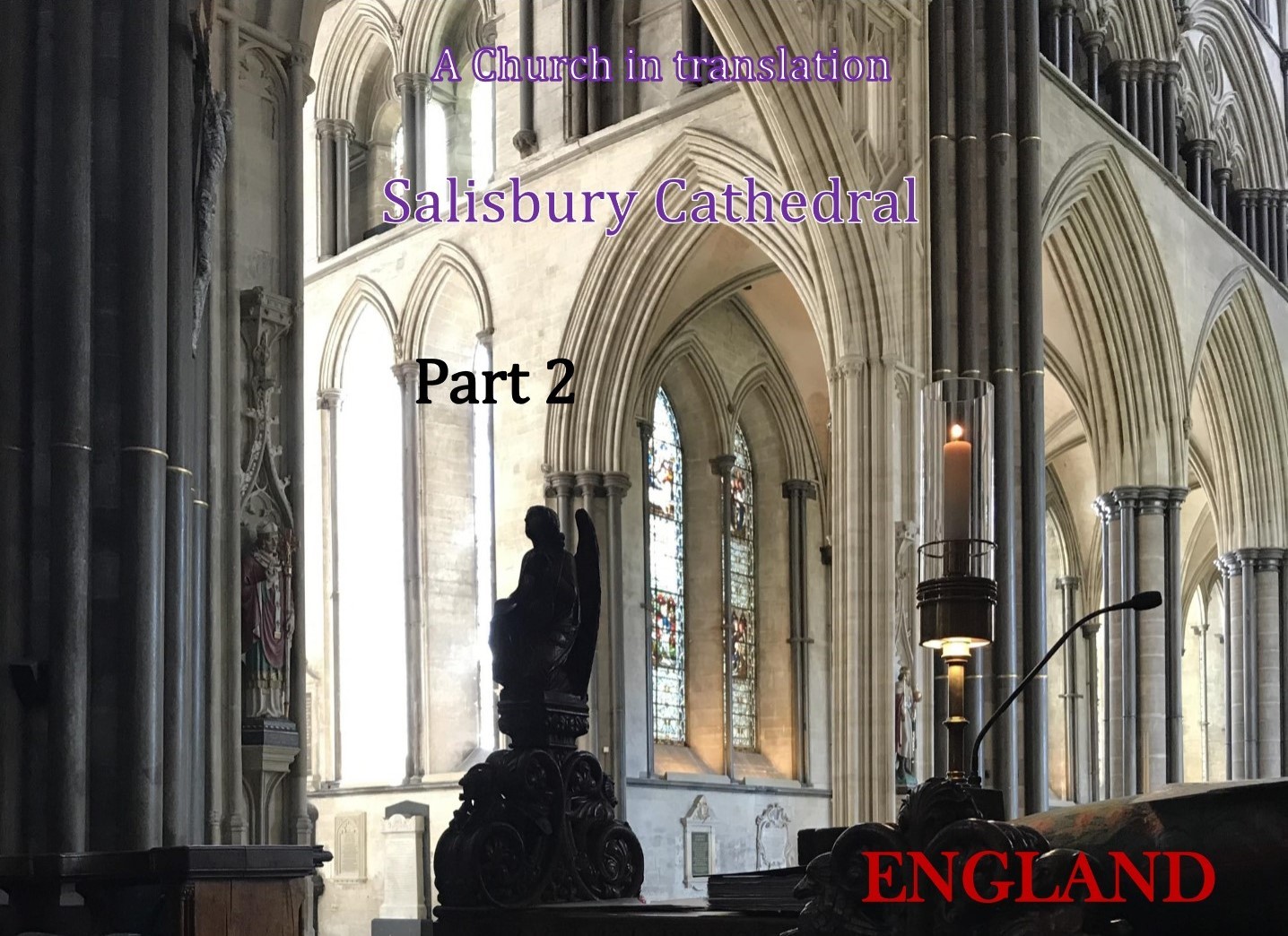Jane, her sister Cassandra, and their mother moved into Chawton Cottage in 1809, thanks to her brother Edward Knight’s generosity. One other person came to live with them. Martha Lloyd was a longtime friend, and a few of Jane’s surviving letters are written to her. She was the sister of Jane’s oldest brother James’ second wife, Mary. Got all that? (James took over the rectory at Steventon when their father retired; his son by his second wife, James Edward Austen Leigh, is the one who wrote Jane Austen’s first official biography. So both Martha and Jane were aunts to James Edward Austen Leigh). Continue Reading
Tag: History
At Home at Last: Jane Austen in Chawton Cottage—Part 2
(Part 1 here)
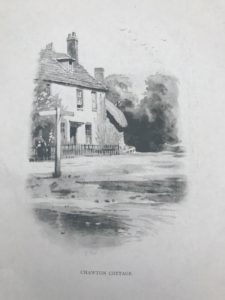 The front of Chawton Cottage, where Jane Austen spent the last eight years of her life. Source: Jane Austen: Her Homes & Her Friends, by Constance Hill.
The front of Chawton Cottage, where Jane Austen spent the last eight years of her life. Source: Jane Austen: Her Homes & Her Friends, by Constance Hill.
How Edward Austen became Edward Knight: Austen’s Emma begins with a marriage between Emma’s governess, Miss Taylor and Mr. Weston, with Emma bemoaning the fact that her companion had now disappeared—moving a whole half mile away to her own house, her own husband, her own occupations. ‘…Emma was aware that great must be the difference between Mrs. Weston only half-a-mile from them, and a Miss Taylor in the house…’ Continue Reading
At Home at Last—Jane Austen in Chawton Cottage—Part 1
The Bath years, the writing falters, but the research doesn’t
George Austen had had it by 1801. He had been rector of two parishes, Steventon and Deane, for thirty-seven years. He had conducted two, maybe three services a week at the two churches. He had visited the poor, the sick, administered last rites to the dying, and buried them in the churchyards. He had home-tutored pupils who had lived in his house year-round to prepare for the university. His wife had to be their de facto mother, and she had fed them, washed their linens, and tended to their fever and chills. All this, to make extra money to supplement George Austen’s income. Now, his children were grown up, some were married (Jane and her sister Cassandra were not, and were still at home), he was old(er) and in poor health, and he wanted to live the rest of his life out in a relative peace. Continue Reading
Not Northanger Abbey: Jane Austen, Steventon, and the Church of St. Nicholas—Part 2
(Part 1 here)
A half a mile south of the old rectory is the Church of St. Nicholas, where Jane’s father preached and led his flock, and where she attended services. It’s also another smooth, macadamized road today—in Jane’s time, it would have been a rough path, slushy in the rains, dusty in dry summers.
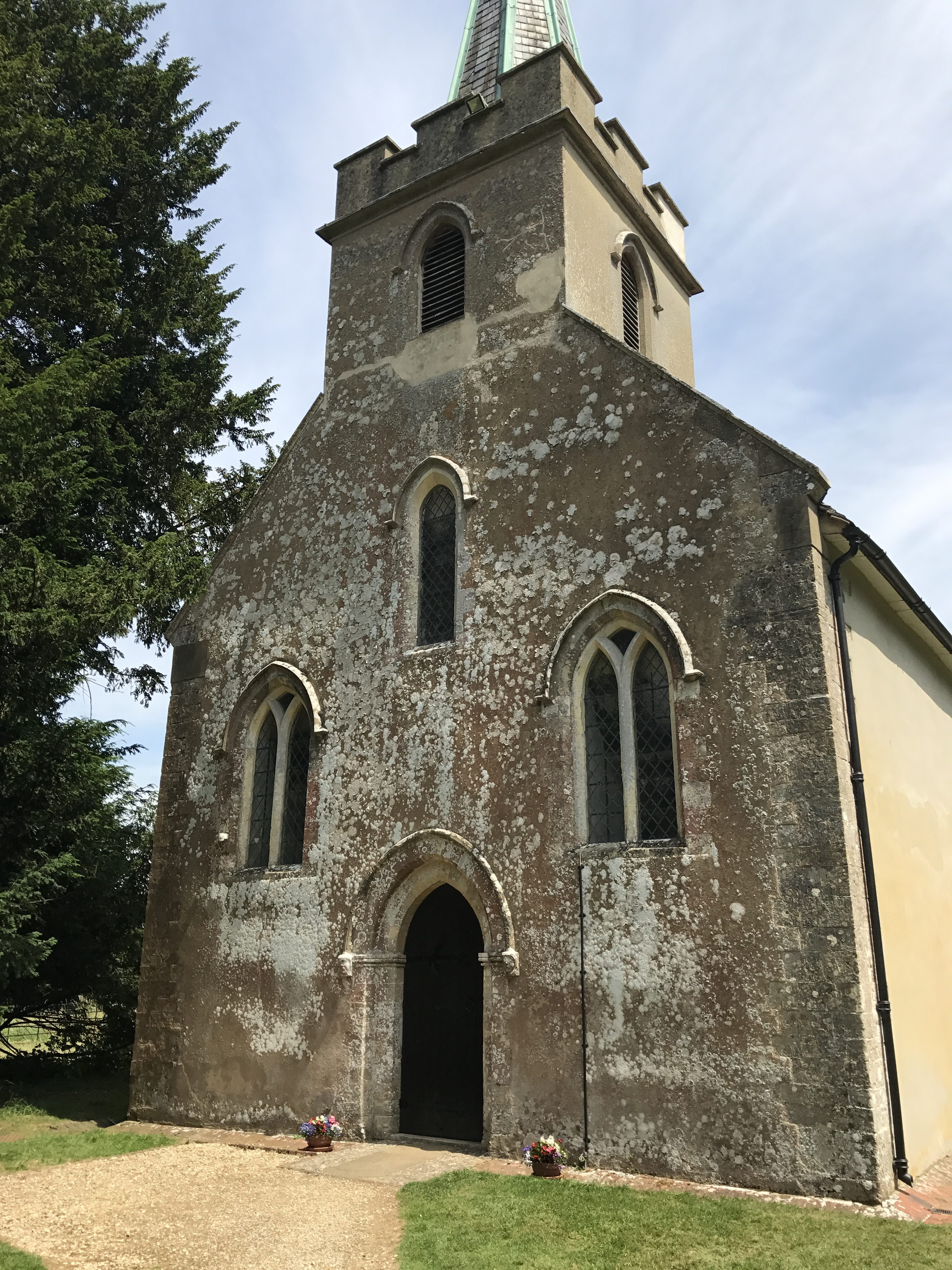
The church dates to the 12th Century, so it had been standing there, among the fields and the pastures, for almost seven centuries by the time George Austen came to Steventon to be rector. The warm southern wall of the church, right of the entry door, hosted purple and white sweet-smelling wild violets that bloomed in summer. The close-cropped green of the churchyard was shaded by elms, hawthorns and a mighty, aged yew, which had probably been there for as many years as the church itself. Continue Reading
Not Northanger Abbey: Jane Austen, Steventon, and the Church of St. Nicholas—Part 1
I’m in a churn of delight when I glance at the GPS and see that the Church of St. Nicholas is not more than a half mile away from the turning. Like the best of anticipations, I can’t see the church as we drive along the road, only trees that clot the roadside and arc their branches over, letting little tatters of sunlight through. It’s a slim, country road, a one-laner. Eventually, we hit the end of the road, and the church raises its steeple on the left in a miniscule churchyard. Birds coo and chirp, bees hum in the sunshine; there’s one other car in the parking lot, whose occupants leave almost as soon as we get there. Continue Reading
Stonehenge: Standing in Time—Part 2
(Part 1 here)
What is it? What was it used for? Circles beget circumambulation, and so several guesses have been made that it was part of the ritual at the stones. This, going around as a form of prayer, is still present in Hindu temples and ceremonies. It’s called Pradakshina (Sanskrit for ‘moving to the right’), and in temples, devotees set off on a clockwise path around the deity, or brides and grooms around the sacred fire during a wedding ceremony.
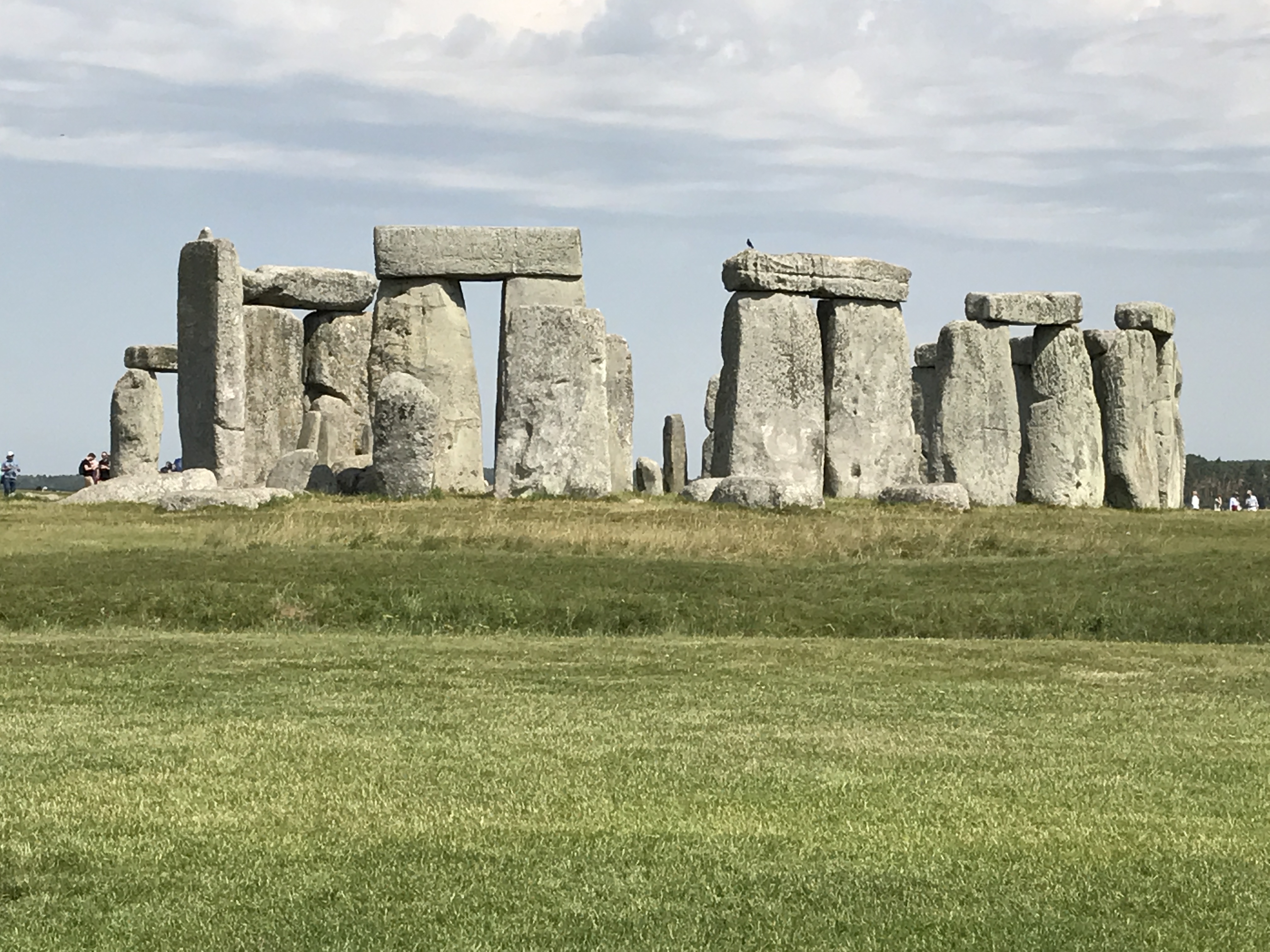
The Stonehenge stones are also arranged on a northeast/southwest axis in line with the midsummer and the midwinter sun—on the day of the summer solstice, the sun rises and strikes the northeast entrance to the stones; on the day of the winter solstice, the sun sets at the southwest point of the circle. Stonehenge has been dated (at its earliest) to the end of the Neolithic period, around 3000 BCE, and construction continued for a good 800 years after. If the stones stand today, more or less as they were composed some five thousand years ago, with that northeast-southwest axis, then the reasoning is that Neolithic man knew something about the sun, the moon and the stars. And they followed the path of the sun, and understood what the summer and winter solstices were. So, it’s an observatory of some kind? Something that allowed Neolithic man to track the movement of the sun?
Continue Reading
Stonehenge: Standing in Time—Part 1
Let me Tell You a Story: When an opalescent band streaked over the horizon, twenty minutes before sunrise, the druid in the flowing white beard folded his robes tight around his chest. Midsummer, he thought, and the nights were still cold. It had been a long, and tough winter, snowing as late as April, the white not melting until May, leaving the ground hard and unforgiving. The last harvest had been pitiful, and it was to avoid another that they were assembled here, at this sacred space—the farmers who depended on his word, his wisdom, his magic, his ability to command the Sun God. Continue Reading
Max Gate: The house that Tom built—Part 2
(Part 1 here)
A Space to Write: To any writer, perhaps the most important room in the house is the place to write. Hardy had three. In his original plan for the house, the ‘two up, two down,’ his first study was one of the ‘two up’ rooms upstairs, over the drawing room.
Left, Hardy’s First Study, above the drawing room. Right, Hardy’s Second Study, originally the guest bedroom.
At that time, even though the house was called a ‘two up, two down,’ there was a small guest bedroom behind the master bedroom which was over the original small kitchen on the ground floor. This later became his second study. Continue Reading
Max Gate: The house that Tom built—Part 1
Which Thomas Hardy? Search for ‘Thomas Hardy’ and—apart from our book-related Hardy—two other very interesting results also show up. One is about the trial of a Thomas Hardy for high treason, and the other about an altarpiece—a reredos—discovered behind the wooden altar in All Saints Church, Windsor, and attributed to a Thomas Hardy.
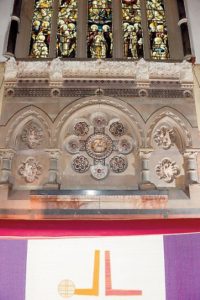 Thomas Hardy’s reredos in All Saints Church in Windsor. Continue Reading
Thomas Hardy’s reredos in All Saints Church in Windsor. Continue Reading
A Church in translation–Salisbury Cathedral—Part 2
(Part 1 here)
The New Cathedral Rises
The first service at Salisbury Cathedral was held in 1225 A.D., when Bishop Richard Poore deemed that enough of the church had been completed. The next year, in March, the Earl of Sarum, William Longspee, who had been present at the dedication of the foundation (he laid the fourth stone)—died.
He is the first person to be buried in the cathedral.
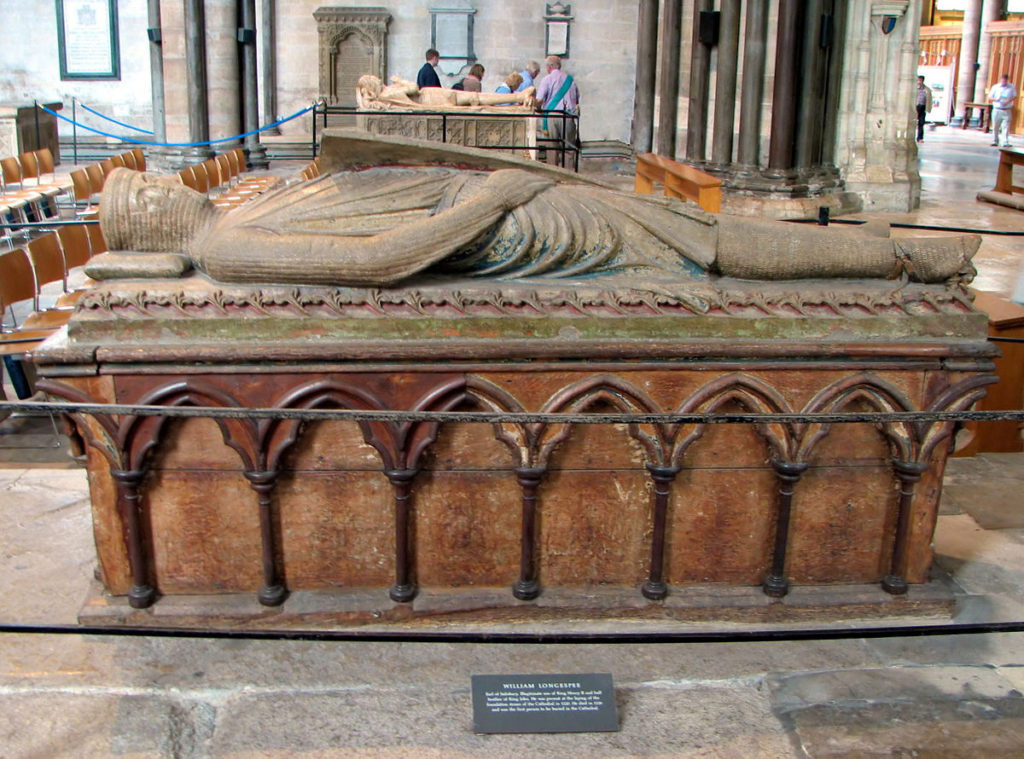
The effigy of William Longspee, Earl of Sarum, at Salisbury Cathedral. Source.


